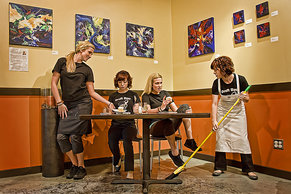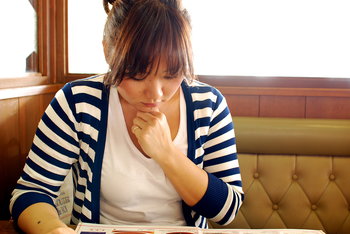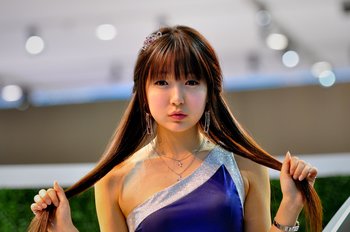

Awareness
Awareness is the process of a customer first hearing your name and understanding what you sell. This is cursory in nature and is limited to elements such as brand recognition, brand awareness and/or an initial relationship with a salesperson. Awareness is important to marketing and sales as customers are hesitant to buy brands and products that they have never heard of. Likewise, customers often prefer to buy from salespeople they know. The following are common steps at the awareness stage of the customer journey.Visual Symbols | Seeing a visual symbol such as a brand logo. |
Brand Name | Hearing or seeing a brand name. For example, attending an event sponsored by a brand where a brand name is mentioned several times. |
Environments | Stepping into a physical environment such as a shop or a digital environment such as a website. At this stage the visit is curiosity driven because the customer knows little about you. For example, a customer who clicks on an ad to arrive at the web page of a brand that is new to them. |
Product Sightings | A customer sees someone with the product. For example, a fashion enthusiast sees a woman wearing interesting boots and wonders where she bought them. |
Hearing about a brand, product or person from friends. | |
Media | Media mentions or coverage of a brand, product or service. This can include negative coverage. |
Promotion | Promotions such as viewing an advertisement or a product placement in a film. |
Search | Encountering the brand or product in a search. At the awareness stage, customers aren't searching for the brand directly. For example, searching for "camping gear" on an ecommerce site. |
Networking | Networking such as talking to an employee or salesperson from a firm at an industry event. |
Discovery
Discovery is the stage in the customer journey when the customer takes some type of active interest in your brands or products. This can be driven by curiosity or research of a purchase.Visits | Visiting a digital or physical location such as a web site, shop, showroom or booth at an event. At the discovery stage, visits aren't random but purpose driven. |
Reviews | Reading product reviews. This can include reviews perceived as positive, negative or fake. |
Social Media | Reading community posted content about the brand and product. This includes the possibility of interacting such as asking a question on a forum or product review site. |
Media Consumption | Viewing media related to your brand such as promotional videos for a product. |
Information Consumption | Reading information such as product specifications. |
Looking at the Product | Viewing visuals of the product such as a lookbook on a fashion site. |
Touching the Product | A moment of truth when the customer actually gets your product in their hands. For example, a customer who sits in your vehicle for the the first time in a showroom. |
Contact | Contacting your firm to make an inquiry. |
Conversion | Taking some positive action as the result of a marketing effort. For example, filling out a form to receive a free trial. |
Meetings | Meetings with sales and other representatives of your firm. |
Asking Questions | Asking questions about the product to your staff or others such as friends. |
Statement of Need | Providing sales with information about your needs. For example, a customer who gives a salesperson of home heating, ventilation and cooling systems information about their home. |
Purchase
The process of making a purchase. This can be a repeated process whereby a loyal customer repeated purchases from you. It can also be a more extensive initial process whereby a customer compares you to competitors and makes the decision to buy.The experience of finding information too complex. For example, being overloaded with the technical terms, features and diverse opinions found in product reviews. | |
Things the customer would like to know but doesn't. Some customers will avoid ambiguity and will purchase a product that provides answers such as detailed specifications. For example, a customer who rules out a sleeping bag because the product information doesn't state if it is for cold or warm weather. | |
A state of tiredness from spending too much effort thinking about a decision. A customer in this state may make poor decisions or buy a product that makes things simple for them. For example, a customer who wants to try a new shampoo but after reading a few confusing labels goes back to his regular shampoo. | |
The process of building relationships with salespeople and other employees. For example, a customer who avoids one shop because staff were unfriendly to her once and often goes to a shop where staff know her face and are nice. | |
Samples & Trials | Obtaining a free sample or a trial subscription. |
Price Comparison | Comparing prices between different products and options. |
Customizing the product. For example, a bicycle that is customized whereby customers begin their shopping experience by selecting a color. This may make the customer feel committed and interested. | |
Quality Comparison | |
Features & Functions | Comparing the features and functions of different products and options. |
Quotes | Asking for a price quote when the price is negotiable. |
Negotiation of price and terms. This can involve hundreds of complex interactions such as a customer who uses a bogey as a negotiation tacit. | |
Coupons | Looking for discounts and coupons or waiting for a sale. |
The process the customer goes through to make the purchase decision. | |
Decision Justification | Identifying reasons that the purchase is smart. For example, a customer who buys an overpriced organic coffee because 5% of proceeds are donated to a charity that sounds worthy. |
Product Selection | Selecting the product that you want to buy. For example, finding the size and color combination you require. |
Shopping Cart | Interactions with a shopping cart such as adding items, removing items, applying discounts, viewing shipping charges and tax. |
Saying yes to a salesperson to close a deal. | |
Purchase | Making a purchase that doesn't involve negotiation such as an ecommerce purchase. |
Purchase Confirmation | The process of receiving a purchase confirmation and reviewing it. |
Buyer's Remorse | Regretting a purchase. This can happen almost immediately for a variety of reasons. For example, a customer who orders a Christmas cake but then remembers they didn't check if the ingredients on the label were healthy. |
Rebuy | An automatic or effortless repurchase of something you have purchased many times such as a consumer who purchases the same coffee supplies every week. |
Reevaluation | A reevaluation of a product you regularly rebuy. For example, a customer who wants to make a change to organic coffee but isn't sure. |
Experience
The end-to-end customer experience associated with using your products and services. This includes interactions with the product itself and is impacted by aspects such as design, quality and usability. Customer experience also includes interactions with services, people and environments. This includes factors that may be beyond your control such as the brand culture that evolves around your offerings.Interactions related to your fulfillment of a service. For example, an ecommerce company that delivers packages on time. | |
Unboxing | The experience of receiving and unboxing the product. For example, electronics in a cardboard box that can be opened effortlessly as opposed to encased in hard plastic that is impossible to open without heavy duty scissors. |
How easy the product or service is to learn. For example, a mobile device that feels intuitive from the start. | |
Stability | How much things change such as a mobile device that automatically updates its software and adds new apps you don't want. |
How pleasing and productive a user interface is to use. For example, a touch screen that often doesn't recognize inputs versus one that does. | |
Performance | The performance of a product or service such as fast software or a slow bus. |
Safety | Safety related experience such as a lawnmower that doesn't spit rocks at you. |
Look & Feel | The look and feel of products and services. For example, a dessert with a refined look such that it is almost a shame to eat it. |
Environments | The experience of physical and digital environments such as a hotel lobby or a game world. |
Sensory Experience | Experiences related to the senses such as vision, taste, smell, sound, touch and sensation. For example, a dessert that feels tingly on the tongue. |
Service interactions with your staff. A single poor experience in this area can completely turn a customer against your brand. | |
Products and services that are easy. For example, a customer steps into a grocery store to find dinner and quickly finds a precooked meal to their tastes. | |
Comfort | A sense of well-being created by your products and services. For example, a hotel lobby that feels tranquil with pleasant scenes, sounds and smells. |
Experiences that customers view as rewarding, deeply meaningful or thrilling. For example, a film that a customer finds to be emotionally moving. | |
Billing | The experience of receiving, reviewing and paying bills. For example, a telecom bill with an incomprehensible list of discounts, subscription fees and usage charges. |
Problems | Situations that customers view as a problem. For example, a customer of a hotel who notices a smell in the air in their room. |
Problem Resolution | The process of resolving a problem. For example, a service that quickly takes care of problems without customer involvement versus a problem that demands the customer's time and causes them stress. |
Participation
Participation is when a customer takes some active role that benefits your business. Firms commonly offer ways for customers to participate as this can create a sense of loyalty as customers may feel that they have helped to build your brand. This can also represent a source of promotion and improvements to your brand culture and products.Reviews | Posting reviews of your products and services. |
Recommendations | Recommendations by word of mouth such as social media. |
Media Mentions | Talking about you in media or social media. This can help to build brand awareness. |
Answering Questions | Answering questions such as how to do things with your products. For example, a blogger who helps people to configure and customize their mobile devices. |
Solve Problems | Solving problems such as a customer who identifies a workaround to disable a feature some customers find annoying. |
Media Creation | A customer who creates content featuring your product such as an unboxing video. |
Feedback | Contacting you with feedback. For example, identifying a problem with your products such as a software bug. This indicates a customer cares about the product enough to want a fix and is a sign of high loyalty and commitment. |
Product Extensions | Customers who extend the functionality of your products such as game enthusiast who creates a popular mod. |
Design | Some firms engage customers in the design of their products with techniques such as lead users and design competitions. |
Notes
The customer journey can be examined at many levels and customized to the purpose of your analysis. For example, a customer journey analysis to identify sales improvements may be limited to the discovery and purchase stages.| Overview: Customer Journey | ||
Type | ||
Definition (1) | The experience of a customer with a firm, brand or product. | |
Definition (2) | An analysis of the customer experience from the customer perspective. | |
Definition (3) | A time-sequenced set of customer interactions and impressions that influence customer actions and opinions. | |
Related Concepts | ||





































